There are a lot of raspberry pests. But they are all differentiated. Polyphagous pests do not infect crops so often. For them, it is a backup option in the absence of a better food supply. Some pests are common to raspberries and strawberries. But there are also specific pests of the crop: raspberry fly, shoot gall midge.
|
It is advisable to stock up in advance on preparations for treating raspberries in early spring. |
| Content:
|
How and with what to combat raspberry pests
In order to successfully fight numerous raspberry pests and their voracious offspring without causing harm to the crop, you need to know what these insects look like and what raspberry bushes affected by these pests look like.
Raspberry shoot gall midge (raspberry mosquito)
The most dangerous pest of raspberries. Its distribution across regions is uneven. Raspberries in Siberia suffer greatly from it. It is also common in the European part. The damage caused by gall midges is enormous. Can lead to the death of 80% of plantings.
Description of the pest
An adult insect is a small, inconspicuous mosquito 1.5-2.2 mm long. The summer is long: from mid-May to mid-July.
|
The mosquitoes are black with a brown back covered with orange hairs. |
Mosquitoes do not feed, lay eggs and die after 4-5 days. There are 8-15 eggs in a clutch. After 8-10 days, microscopic orange larvae appear, crawl under the bark and begin to feed. The larvae overwinter either in galls under the bark or in the soil under bushes at a depth of 0-3 cm. Two generations of pests hatch during the season. The first generation is the most dangerous.
Nature of damage
Cultivated raspberries, especially those with a two-year cycle, have a peculiarity: when one-year shoots reach a height of 40-60 cm, microcracks appear on the bark. The process intensifies with uneven moisture. The female lays her eggs in these microcracks at a height of 30-50 cm. If the stems are not damaged, the gall midge will not be able to find a place to lay eggs and will fly away.
The larvae feed on shoot sap under the bark.When feeding, they secrete a secretion that destroys nearby tissues. One crack can feed from 5 to 20 larvae. The affected area becomes purple in color and galls (swellings, ridges, tubercles, irregularities) form on it.
This is called gall midge burn. It is often confused with purple spot, which also produces purple spots. The difference between them is that when affected by gall midges, the surface of the stem is uneven, swellings (galls) appear, and when the disease occurs, the purple spots are even and smooth.
|
Even with severe damage, annual shoots practically do not fade, but become very fragile. If there is a strong wind or an attempt to tilt them aside, they break. |
The next year, the affected shoot lags behind in growth, the buds bloom unevenly, and it suddenly dries out.
Control measures
Wide-spectrum insecticides are used: Decis pro, Aktara, Karbofos, Iskra. Raspberries are processed from May to mid-July every 14 days. Stems at a height of 40-60 cm are sprayed especially carefully.
Folk remedies. Mosquitoes fly to the smell of juice released from the cracks. Therefore, raspberries are sprayed with infusions that have a strong odor.
- Onion infusion. 300 g of husks are poured into 1 liter of water, boiled for 10-15 minutes, and the volume of the solution is adjusted to 10 liters. Spray at a height of up to 60 cm. Instead of onions, you can use garlic peels.
- Tomato infusion. 300 g of stepsons are poured into 10 liters of water, left for 1-3 days and the plantings are treated.
- Spraying raspberries with kerosene. Add 100 ml of kerosene to 10 liters of water and stir thoroughly. Spray the stems and the soil underneath them.
The disadvantage of folk remedies is their short duration of action. The smell disappears after 2-3 days, and the pest continues its dirty work.
Prevention. Since some pests overwinter in the soil, raspberries are deeply loosened in the spring. This significantly reduces their numbers.
Other measures.
- Thinning growing shoots. In dense plantings there is a high level of damage to stems.
- Adjusting watering. Sudden changes in soil moisture should not be allowed.
- Raspberries are not planted for at least 3 years after the previous plantings have been uprooted.
- Selection of resistant varieties. All varieties are affected by gall midge, but some do not crack as much during the growth period. Consequently, there are much fewer pests on them. These include: Balm, Bell, Reward. The Vera variety is affected very rarely, as it practically does not crack and has strong pubescence.
Prevention can significantly reduce the infestation of a plot, but does not completely eliminate the pest.
Raspberry beetle
Although the beetle is called the raspberry beetle, it also damages strawberries, eating pollen, stamens and pistils in the flowers. When the raspberry blooms, it moves onto it, where it continues to feed and lay eggs.
Description of the pest
The beetles are grayish-yellow in color, small, covered with hairs. The larvae are small worms that feed inside the berries, white, pointed at the ends. At older ages they become yellow with a reddish tint. Beetles overwinter in the soil. At the beginning of May, they come to the surface and parasitize first on strawberries, eating out the flowers, and later, when the raspberries bloom, they move on to it, feed on the leaves, eating holes in them.
|
Raspberry beetle. The pest can experience a complete lack of harvest in some years. |
Females lay up to 40 eggs in flowers and green ovaries. One egg is laid in each flower. The larvae feed inside the berry. After 35-40 days they fall to the ground and pupate. One generation of pests hatches per season.
Nature of damage
Both beetles and larvae are harmful. The beetles eat holes into the leaves. However, they do not cause much damage.
The larva lives and feeds inside the berry. This is a worm that is discovered during harvesting. It damages the drupes and eats away the receptacle. Damaged berries rot and become unfit for consumption. But this happens when the pest reaches older ages. The small worm does not cause visible changes in the berries; only when harvesting can you notice damaged drupes or receptacles. Up to 80% of all larvae are collected together with berries.
|
Raspberry beetle larva |
How to deal with raspberry beetle
All broad-spectrum insecticides are very effective. The treatment is carried out at the beginning of the strawberry growing season, then when the raspberry leaves bloom. The third spraying is done during the budding period of the crop. The following drugs are used: Karbofos, Inta-Vir, Iskra, Decis, Actellik.
Folk remedies. Suitable for those who live in the country. In the morning, the beetles are inactive and sit on the raspberries under the leaves. Early in the morning, lay a bedding under the raspberries and shake off the beetles. They are then manually collected and destroyed.
Prevention. Loosening the rows in the fall.
Raspberry fly
A specific raspberry pest that damages raspberries and blackberries. The damage is similar to that caused by glass beetle on currants.
Description of the pest
The adult insect is a small gray fly. Flies in May-June, feeds on nectar. Lays eggs on the tops and axils of the leaves of growing green shoots. The larvae are dirty white, bite into the shoot, inside which they live and feed, gnawing through spiral passages inside.Feeding continues for 2 weeks, after which the larva comes out, enters the soil and goes to a depth of 5-6 cm. The next year, flies fly out in the spring. Their yield depends on temperature. In warm spring they fly out within 10 days. In cold and damp weather, the emergence of flies lasts for 20 days. During the season, 1 generation of pests is born.
|
Raspberry fly. This raspberry pest is rampant in dense plantings, where up to 90% of all young shoots are affected. |
Nature of damage
Only young shoots with soft, delicate green bark are damaged. Sufficiently powerful shoots are not damaged, since the larva cannot gnaw through the passage. The tops of damaged shoots droop and wither, and then dry out. Damaged shoots below the drying top branch, but the growth, as a rule, does not ripen, and the shoot freezes completely in winter.
Remontant varieties are damaged more than biennial varieties.
Methods of pest control
The main treatments are aimed at controlling flies. There are no drugs against the larvae, feeding inside the stems, they are reliably protected from pesticides.
- Spraying raspberries with karbofos (fufanon). In damp, cold spring, treatment is carried out twice, since the period of flight of flies is longer than the time of action of the drug.
- You can treat it with Confidor or Actellik, but they are slightly less effective than Karbofos. Do double treatment of raspberries during the pest flight period.
- Cutting out damaged shoots to the base. There is no point in leaving them, as they will freeze in winter. Damaged shoots are burned. If they are left, the larva will emerge and overwinter safely in the soil.
If the larvae have already gone into the soil, then water the plot with a 1% kerosene solution. But the treatment is carried out in case of a massive pest attack and very carefully.You should not poison the soil because of several dozen flies.
|
Raspberry stem fly |
Prevention. Not as effective.
- Thinning of dense plantings.
- Fighting aphids on raspberries. The fly is attracted to the sweet secretions of aphids.
Pest control is problematic. Its flight is long, the larva is reliably protected.
Raspberry-strawberry weevil
Damages raspberries and strawberries. In addition, it can attack roses and wild plants of the Rosaceae family.
Description of the pest
The adult insect is a small black beetle with a wide abdomen and a narrow, long front part. The larvae are grayish-white, curved. They feed in the buds and pupate in them. After 10 days, the beetles emerge, feed on the leaves, and in the fall go to the soil for the winter. 1 generation of pests is born per year.

Raspberry-strawberry weevil. In early spring it feeds on strawberries, and later moves on to other plants. |
Nature of damage
Females lay one egg each in the buds of strawberries, raspberries, rose hips, etc. The fertility of one beetle is up to 100 eggs. Having laid the egg, the female gnaws the peduncle, the bud droops and later falls off. The larva feeds in fallen buds. During a massive pest invasion, up to 60% of strawberry buds and 40% of raspberry buds die.
If the bud does not fall off, the larva in it dies.
The beetles gnaw small holes on the leaves, but this is not dangerous and does not cause serious consequences.
Control measures
Initially, beetles appear on strawberries, so this is what they treat in early spring.
- Spraying raspberries with Karbofos (fufanon). The number of the pest is significantly reduced until it completely disappears for a short time.
- Iskra, Inta-Vir.They also do a good job.
- With insignificant distribution, biological products Nemabakt and Fitoverm are used. They cope well, but their action is somewhat slower.
When raspberries bloom and budding, they are treated with the same preparations. All treatments are carried out before flowering.
|
In the summer, when the weevil population is high, after harvesting, another spraying is done, treating all berry crops and flowers at once. |
Folk remedies ineffective. Beetles move over considerable distances, and the duration of folk remedies is too short to somehow reduce the number of pests. When budding, the berries can be pollinated with ash or fluff, but this is an extremely unreliable thing and is easily blown away by the wind.
Prevention. Spatial isolation of berry growers does not bring results. It is not difficult for a beetle to fly 200-500 m in search of food and a place to lay eggs.
Collection and destruction of fallen buds. Mulching the row spacing with peat manure crumbs in a layer of 5-7 cm.
Raspberry mite
Description of the pest. A very small cylindrical pest. Lives in leaf tissues. Adult mites overwinter on the stem under the bud scales. They multiply inside tissues.
Nature of damage. Mites make passages inside the leaf tissues and suck out the juice. As a result, the leaves become lumpy. Folds appear on both sides of the leaf, first yellow, then discolored. The veins become strongly bent, discolored, and the leaves curl upward. The leaf itself becomes lighter and dries out.
|
Raspberry mite. Several generations of pests appear during the season. |
Ways to fight
Raspberry treatments are carried out in early spring when the buds are opening, when mites emerge from under the scales onto young leaves, or in the fall when preparing mites for wintering.
- Continuous spraying of the raspberry plantation with Karbofos when a green bud cone appears. Autumn processing is done in early September.
- Application of broad-spectrum insecticides: Actellik, Iskra, Kinmiks.
- During the period when mites emerge from hibernation, raspberries are treated with sulfur preparations (colloidal sulfur or Tiovit Jet). The drugs are very effective, but they are used only in warm weather when the temperature during the day is more than 20°C, and at night at least 17°C. At lower temperatures, treatment with sulfur preparations is pointless.
- Apollo drug. Treatment is carried out during the period when ticks emerge in the spring.
During the growing season, it is very difficult to fight the mite, since it is reliably protected by leaf tissues.
Prevention. Manual removal of damaged leaves.
spider mite
A polyphagous pest that spreads widely on raspberries during drought. It accumulates in weeds, especially nettle and clover. On raspberries, it is more harmful than the raspberry mite.
Description of the pest
Small tick of orange or yellow color. They live, feed, leave webs and lay eggs on the underside of the leaf. One female lays 60-100 eggs. Adult mites overwinter in a cobwebby cocoon under plant debris, lumps of soil or under bark. Depending on weather conditions, they leave for the winter in the 1st-3rd decade of September. In a rainy autumn, leaving for winter occurs early; in a warm and dry autumn, it happens late.
|
Spider mite. 4-10 generations develop per season, depending on the region. |
The mass release depends on the weather: in a warm, dry spring it is the end of April-early May, in a cold spring it is the middle and even (in some regions) the end of May.
Nature of damage
Mites inhabit the underside of young leaves.They live there, suck out the juice and weave a thin web. Damaged leaves turn yellow and become deformed, and cobwebs always remain on them. Gradually, the leaves become discolored, bend unevenly both down and up and dry out. When mites move from one leaf to another, they spread a web onto the next leaf. Severely affected plantings may be covered in cobwebs.
Control measures
Acaricides are not used on fruit-bearing plots because they are unsafe. You can deal with ticks using other methods.
- Irrigation by sprinkling. Ticks cannot tolerate high humidity. When the berries begin to ripen, such watering washes away up to 80% of the mites.
- In case of severe prevalence, Tiovit Jet or colloidal sulfur is used. The drugs are effective only in warm weather (above 20°C). When growing young shoots separately, they are processed as needed without time limits.
- Before flowering, it is possible to spray with Karbofos, Lightning and other preparations that have an acaricidal effect.
|
The pest often comes to the dacha from nurseries, so all seedlings must be treated. |
Folk remedies. Spraying raspberries with a soda solution in dry, hot weather. Treatments are carried out every other day, preferably on the underside of the leaf.
Prevention. Mowing the grass around the perimeter of the site, since ticks damage more than a hundred wild plants.
Do not miss:
Raspberry bud moth
Distributed in the Non-Chernozem zone. It is less common in other regions. Seriously harmful in old thickened plantings. Occurs in patches.
|
Raspberry bud moth |
Description of the pest
Small beautiful night butterfly. The wings are brown-gray with black fringe. Red caterpillars up to 1 cm long.The overwintering stage is caterpillars in cocoons. They overwinter under plant debris or under bark. In early spring, the caterpillars come out, bite into the buds, eat them away and then gnaw a passage into the shoot. Having completed feeding in the kidney, they pupate here. During the raspberry blossom period, a butterfly emerges and lays one egg in each flower. The emerging caterpillars live inside the berry and feed on the fruit. At the beginning of ripening, the berries descend to the ground, weave a cocoon and hibernate.
Nature of damage
Damages buds and, partially, shoots. In the spring, the caterpillar bites into the kidney, blocking the entrance with excrement, and eats it out from the inside. Then it gnaws its way to the core of the shoot and pupates there. Damaged buds do not bloom; only one shell remains.
Early raspberry varieties are more affected because they bloom during the mass flight of butterflies.
|
If the caterpillar has gnawed through the shoot, it dries up. In berries, the pest feeds on the receptacle until it completely disappears. |
Control measures directed against butterflies and caterpillars after wintering. Treatment of raspberries with any broad-spectrum insecticides: Karbofos, Decis, Inta-Vir, etc. Treatment is carried out in early spring and during the flowering period of raspberries. Carefully spray the lower part of the shoots, since most of the buds are affected in the lower part up to 25-30 cm.
Prevention. Since moths are actively spreading in thickened plantings, the raspberries are thinned out. Old and weak shoots are cut out, leaving no stumps. Removal of plant residues.
Do not miss:
Conclusion
These are the most dangerous raspberry pests, causing significant damage to the crop or plot. There are many other omnivorous pests for which raspberries are a fallback option.Treating the berry garden with pesticides before and after flowering eliminates most pests from the raspberries.
Other articles about plant pests:
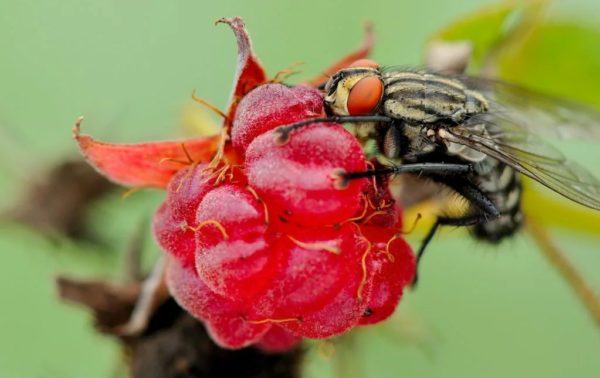

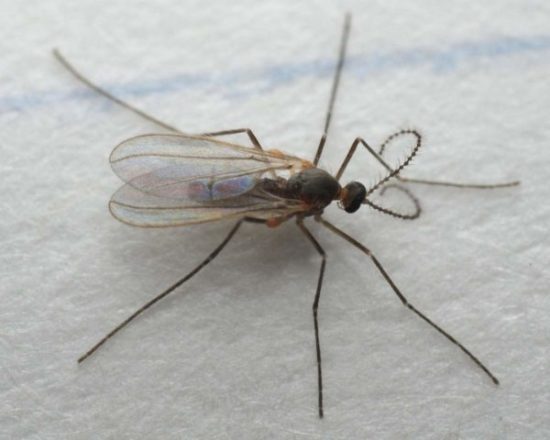
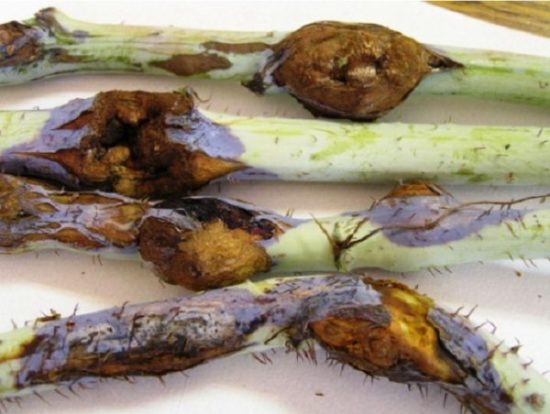
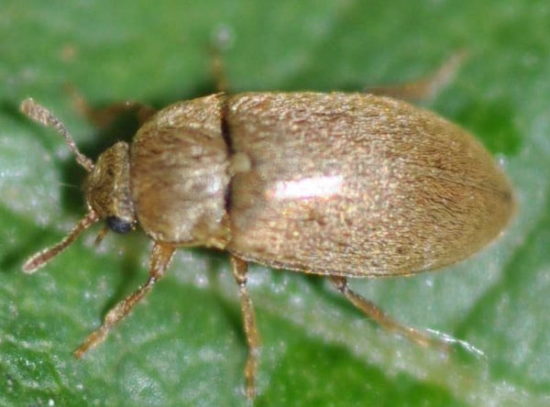
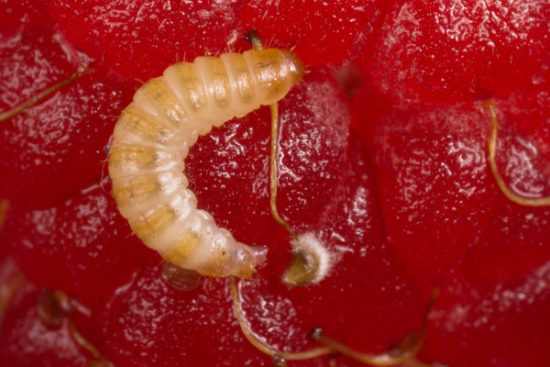
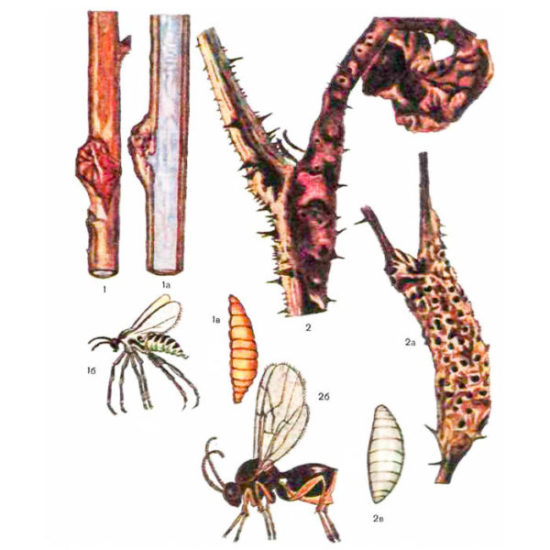
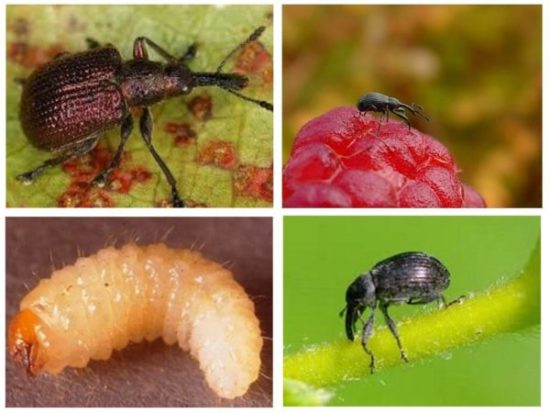
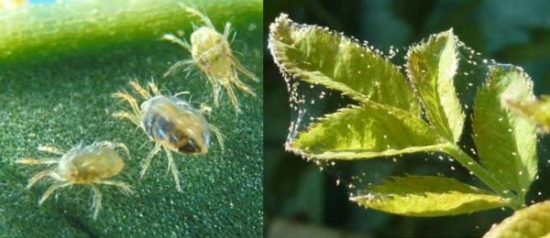
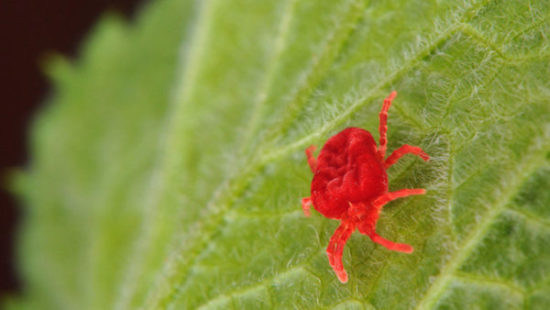
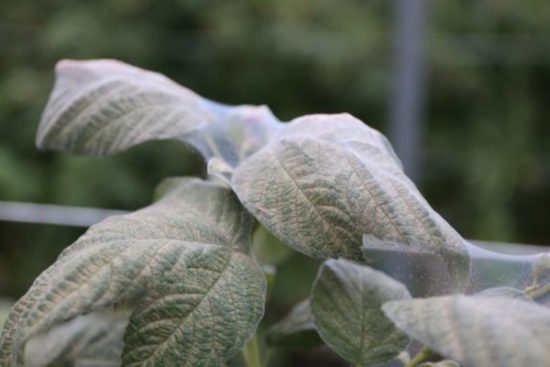
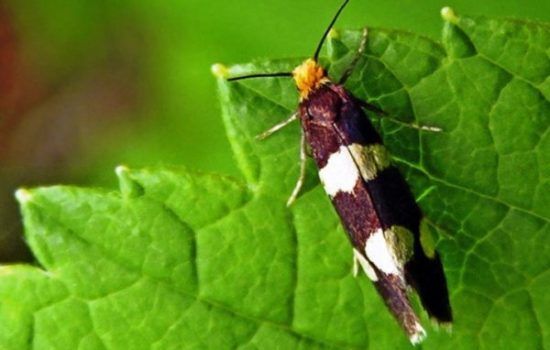
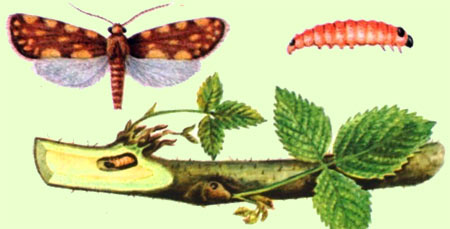

 CUCUMBERS NEVER GET SICK, I'VE BEEN USING ONLY THIS FOR 40 YEARS! I SHARE A SECRET WITH YOU, CUCUMBERS ARE LIKE THE PICTURE!
CUCUMBERS NEVER GET SICK, I'VE BEEN USING ONLY THIS FOR 40 YEARS! I SHARE A SECRET WITH YOU, CUCUMBERS ARE LIKE THE PICTURE! You can dig a bucket of potatoes from each bush. Do you think these are fairy tales? Watch the video
You can dig a bucket of potatoes from each bush. Do you think these are fairy tales? Watch the video
 How our fellow gardeners work in Korea. There is a lot to learn and just fun to watch.
How our fellow gardeners work in Korea. There is a lot to learn and just fun to watch. Eye trainer. The author claims that with daily viewing, vision is restored. They don't charge money for views.
Eye trainer. The author claims that with daily viewing, vision is restored. They don't charge money for views. A 3-ingredient cake recipe in 30 minutes is better than Napoleon. Simple and very tasty.
A 3-ingredient cake recipe in 30 minutes is better than Napoleon. Simple and very tasty. Therapeutic exercises for cervical osteochondrosis. A complete set of exercises.
Therapeutic exercises for cervical osteochondrosis. A complete set of exercises. Which indoor plants match your zodiac sign?
Which indoor plants match your zodiac sign? What about them? Excursion to German dachas.
What about them? Excursion to German dachas.
Thank you, useful article
I’m very glad, Roman, that our recommendations were useful to you.